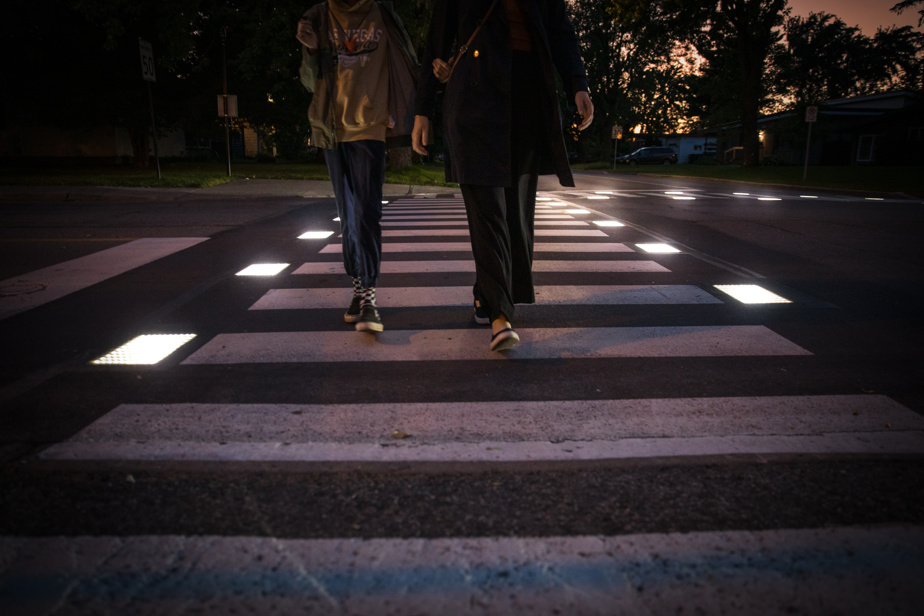Two new crosswalks that automatically light up when a pedestrian passes by have just been installed near school zones in Candiac, on Montreal’s South Shore. A first in America, the initiative is intended to raise awareness among motorists and thus reduce the risk of accidents.
“Our goal is really to increase the vigilance of motorists at stops and intersections, where most often, people are in a hurry and stop halfway,” says Candiac Mayor Normand Dyotte, in an interview with The Press.
The principle is simple: when the pedestrian approaches within a few meters of the intersection, a signal is sent to the system, which then turns on several LED lights. These are installed on bricks that are themselves embedded in the roadway.
Since Monday, they have been found in front of Saint-Lawrence School and Saint-Marc School, located near the municipal library. A septuagenarian crossing guard was hit by a motorist last June at the latter intersection, at the corner of Chemin Haendel and Place Halifax.
What we see is that people speed up after dropping off their child, often to go to work. We need to make motorists aware of this, that’s clear.
Norman Dyotte, Mayor of Candiac
Already present in Europe
Mr. Dyotte said he developed the idea after attending the International Mid-City Innovation Summit in Nevers, France, last year. “It immediately caught our attention because of how effective it was.”
In Europe, where several countries have already installed light crossings, the preliminary results seem to be convincing. According to a recent study by Aximum, a subsidiary of the Colas firm that has installed them in France, respect for pedestrian priority has increased from 67 to 94% where this type of measure was implemented.
For now, the initiative will take the form of a one-year pilot project, with the City of Candiac having obtained special authorization from the Ministry of Transport to install the lighted crossings. Until now, they are not authorized by the government’s signaling standards.
“The ministry will collect data for an entire year, with the help of McGill University, and then they will make recommendations. If it works well, we hope it will be transposed to all cities,” says Mayor Dyotte.
He does not hide, however, that the real challenge “will be our harsh winter.” “With our snowplows, in particular, we will have to see if the installation will be damaged or not. It is something that we will want to test, especially since in winter, it gets dark very early in the morning and evening outside.”
In total, the project cost $200,000, including $171,000 from a grant from the Ministry of Transportation and Sustainable Mobility, through the Road Safety Fund financial assistance program. The remainder was covered by the municipality for installation and technical expertise.
